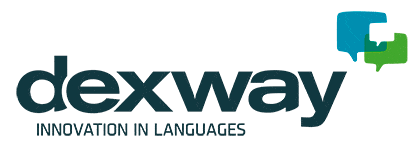Higher education institutions, such as universities, need to include online language courses in their academic offer as language learning is fundamental for all sectors. The globalization of markets and digitalization of all processes require constant adaptation to new developments; this means that students should develop their professional skills in many areas, including languages. It is essential for universities to offer flexible and effective language teaching plans to stay competitive and internationalized.

When it comes to language learning, it is even more accurate to ensure that students can thrive in all types of international markets fluently and effectively. English has become a standard language, from tourism to big businesses, but other languages shouldn’t be ignored if you want to venture into different markets. The most efficient way to offer training in universities is to rely on online language courses.
Renate Latimer, Associate Professor Emerita of German in Auburn University, pointed out in his study “Twenty-five Reasons to Study Foreign Languages” that “graduates often cite foreign language courses as some of the most valuable courses in college because of the communication skills developed in the process”.
Why do universities need online language courses?
After establishing the importance of training, the biggest obstacle that this poses for students is compatibility with their schedules. It is therefore vital to opt for e-learning due to: flexible scheduling, multi-device access, and the ability to offer each student a class pace that suits their needs. This learning method goes beyond the traditional physical format and transcends to a new digital context where there are more advantages and possibilities for the student.
The main reasons for choosing online language courses are:
#1 Innovation & Flexibility
E-learning gives students access to innovative blended learning methodologies that can be combined with online teaching that includes face-to-face classes (online/offline). This allows very flexible schedules where the students themselves plan their commitment to the course depending on their availability.
These courses have multilevel content and it is adapted to students’ educational needs. In addition, to encourage progressive e-learning, new technologies enable students to actively initiate learning outside the classroom through interactive resources. And if necessary with further teacher support within the classroom, language learning will be successfully achieved.
#2 Attracting talent
To appeal to new students, it is important for the university to offer language training plans that can complement the students’ curriculum. Offering language classes in parallel programs or schools (online/blended) can make a difference when choosing one university over another; it is undoubtedly a motivator for the student if they can expand their skills within the same institution.
#3 Profitability
E-learning is much cheaper than traditional learning, among other reasons, thanks to the scalability of the software and the low maintenance costs. In this way, higher education institutions obtain a very high-value educational tool for students, since it offers new possibilities for self-training, adapting to their needs, and setting their own pace.
#4 Online custom courses
E-learning courses contain features that make it possible to create tailor-made courses without costly investments. Thanks to authoring tools and LCMS, universities can customize their students’ learning by adapting content to their school’s needs (change images, modify exercises, rearrange the agenda, introduce new videos, select readings…). Also, they will be able to present content in an interactive way, allowing progressive and flexible learning, assimilating grammar, lexical and phonetic knowledge through practice.
#5 Lab performance
Universities can get more out of their computer labs and library computers by implementing language lab software. With courses for Dexway language classrooms (with internet or local connection), these classes can be used to offer students physical access to their e-learning courses, making it easier for them to study. That way, many more students can be included with less effort. It must be taken into account that the installation of the Dexway language laboratory software also adds additional functionalities to the classroom such as easier monitoring and evaluation of students, lesson and training gamification to make workshops more dynamic and entertaining, and reinforcement exercises available online.
CAE has more than 40 years of experience in the e-learning sector and offers the best language learning solutions for the education sector through its Dexway division. Dexway courses and their LMS platforms offer interactive, multilevel courses, with tutors and in eight languages (USA and UK English, Spanish, French, German, Italian, Russian, and Portuguese). To combat dropouts and keep students motivated from the beginning to the end, the courses utilize a gamification system with scores, achievements and leaderboards and include access to an online community where students can interact and practice with each other.




